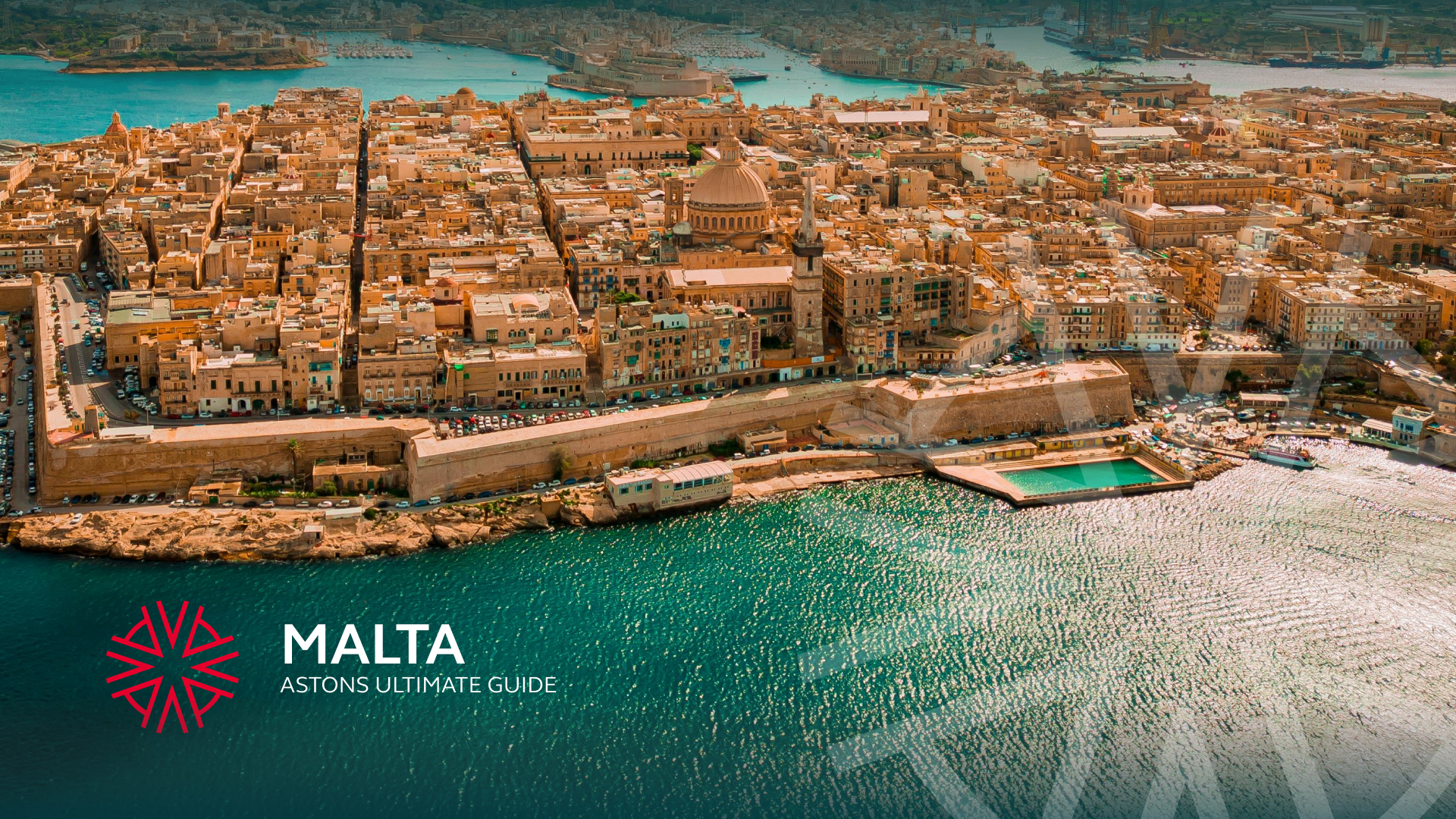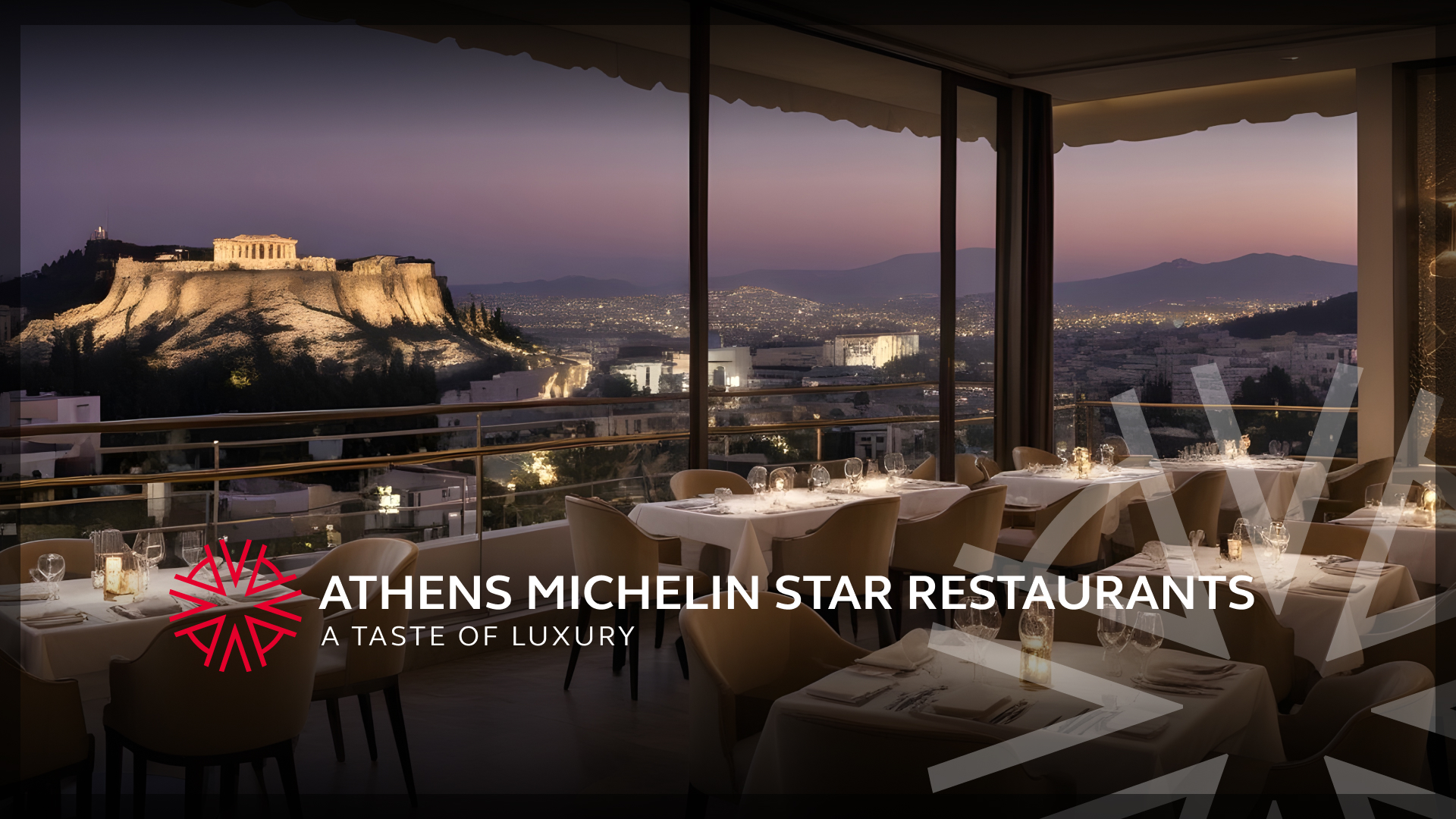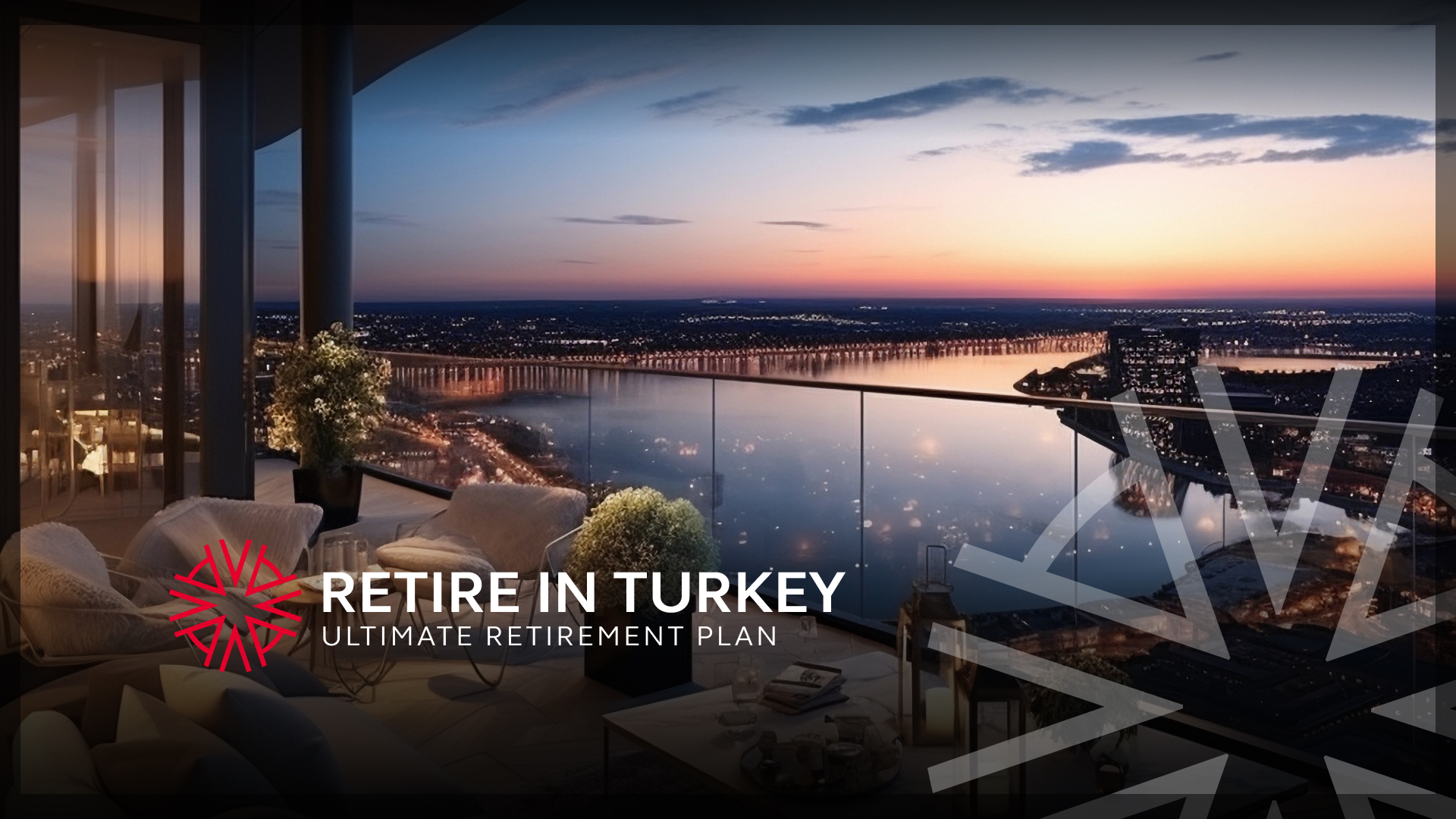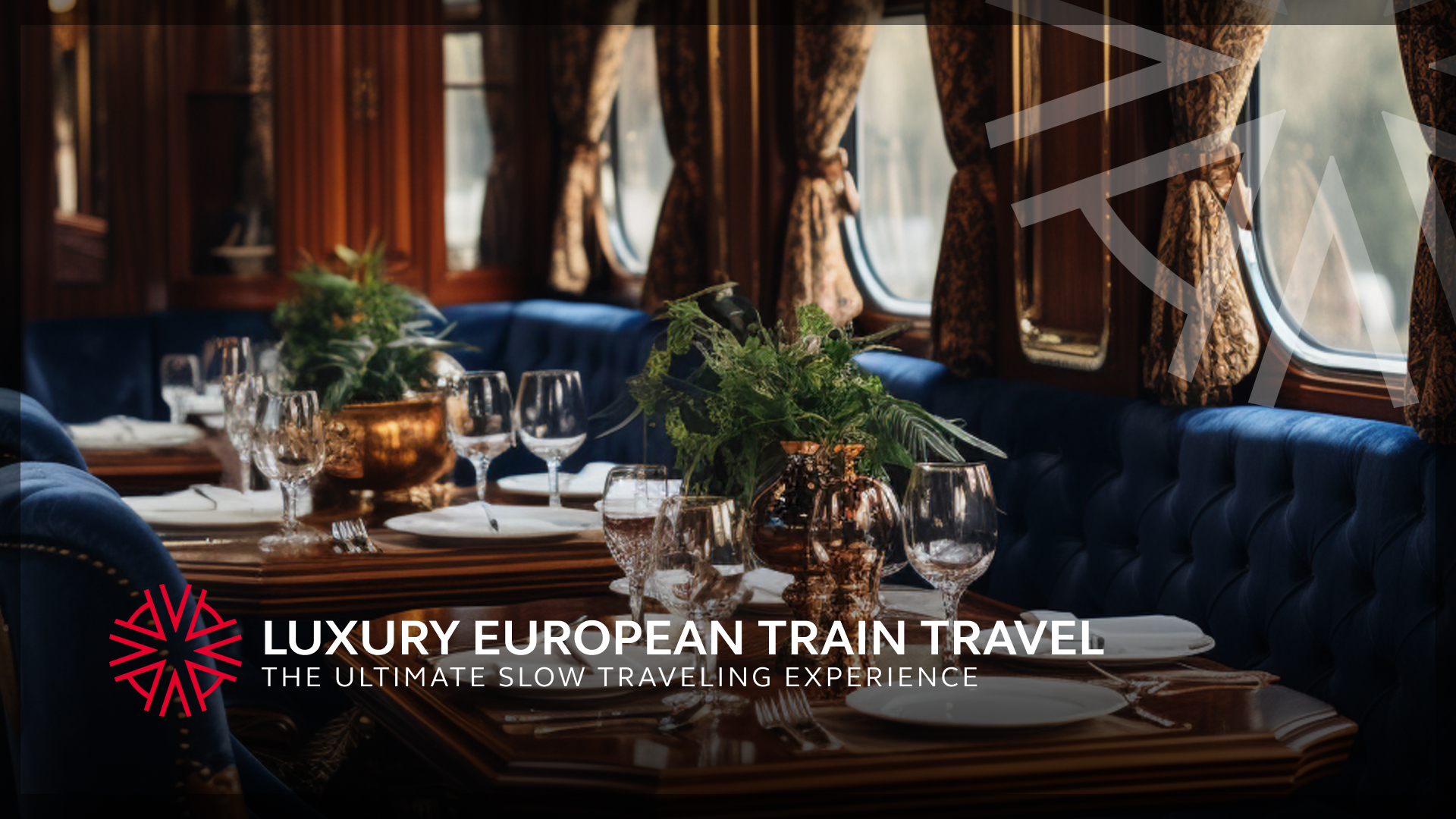Malta has long been considered one of the EU’s hidden gems, but with a tourist-to-resident ratio of 3-to-1 over the past five years and an expat community that has increased sixfold over the past decade, this high-net-worth secret may well be out.
The country’s popularity is easy to understand, and the most popular origin for tourists to Malta are:
- Italy
- France
- The United States
- The United Kingdom
Malta is a Mediterranean archipelago with three main islands and several uninhabited islets – each more stunning than the next. It has pristine beaches, crystal-clear waters, and year-round average daytime temperatures of 73°F (23°C).
Moreover, Maltese residents enjoy the highest standards of living, low taxation, and retreat from – but effortless access to – the rest of the EU.
These factors – and more – have attracted thousands of HNW entrepreneurs, investors, and families to Malta in recent years – a trend expected to continue unless a legislative curb to make Malta more exclusive occurs – such as in Portugal and Greece.
With the insights and cooperation of our experts and insiders in our St Julians’ office, a popular seaside town just north of the capital, Valletta, we provide this ultimate guide to Malta—a HNWI’s guide to the crown jewel of the Mediterranean.
Brief history of Malta
Maltese history stretches back thousands of years, with prehistoric temples at Ġgantija and other sites across the islands considered some of the oldest free-standing structures in the world.
Owing to its central location in the Mediterranean, Malta has been strategically important for nearly every empire throughout history, from ancient civilizations to modern sovereigns.
The Phoenicians, Greeks, and Romans all had a lasting impact, while Arabian conquerors later introduced new agricultural methods and profoundly influenced the Maltese language.
Later, the Normans integrated Malta into the Kingdom of Sicily and introduced Christianity, the country’s dominant religion to this day.
In the centuries that followed, Malta continued to be shaped by global powers. The French, under Napoleon, were in brief control until British colonization in 1800.
Malta gained independence from the British Empire in 1964, became a republic in 1974, and remains a member of the Commonwealth.
Malta joined the European Union in 2004, joined the Schengen Zone in 2007, and adopted the Euro in 2008.
Malta has developed a thriving economy driven by tourism, film and media, and manufacturing. This is paired with a robust financial services sector, which was central to the rise of cryptocurrency, giving Malta the nickname ‘blockchain island’.
Few countries have such a unique blend of ancient cultures and influences, making Malta a genuinely intriguing place to live and visit. From the silent city of Mdina to the bustling streets of Valletta, the islands are living museums of history.
What makes Malta so attractive?
What makes Malta attractive for HNW entrepreneurs, investors, and their families? Well, the list is impressive, and among other reasons, includes:
- Gateway to the European Union: Maltese citizens are EU citizens and thus have complete access to the EU, with the right to live, work, conduct business, and study in any EU country. Maltese residents enjoy limited EU rights, including visa-free access to the EU for 90 days every six months and ETIAS-exemption status for the entire EU.
- Attractive Investment Programs: Malta offers one of the only EU citizenship by investment programs and an exclusive Golden Visa program (the Malta Permanent Residence Program) – excellent routes to investment-based residency and citizenship through real estate, government bonds, or contribute to the national development fund, with the potential for a positive return on investment.
- Tax Optimization Options: Malta has an appealing tax structure, particularly for expats and high-net-worth individuals. Malta offers a very lucrative Non-Dom tax program, a flat tax rate on foreign income remitted to Malta, and no taxes on:
- Inheritance
- Estate
- Wealth
- Municipal/Local
- Business Friendly: Malta’s economy is robust and diversified, with strong sectors in finance, gaming, maritime, and tourism. Its strategic location and EU membership make it an attractive international business and investment hub.
- English-Speaking: Malta has two official languages – Maltese and English, but all official work is done in English. Nearly 90% of the Maltese population is fluent in English. Along with a sizable expat community, this makes the transition to life in Malta much more straightforward for newcomers from the US, UK, and other English-speaking countries.
- Quality of Life: Malta has excellent healthcare services, a strong educational system, and a safe, stable social environment. The quality of life is exceptional, with life expectancy rates in the top 10 worldwide.
- A Different EU: Though Malta is a full-fledged member of the EU and Maltese citizens are 100% EU citizens, Maltese society is the most conservative community in the EU – offering a very appealing contrast to EU life for some investors.
Prime locations for luxury living in Malta
Malta might be small in stature, but it’s still home to several prestigious European regions and neighborhoods.
From lavish city-center apartments in Valletta to traditional, serene villas with views of the Mediterranean, here’s a closer look at the prime property locations for luxury living or investment in Malta.
Valletta & The Three Cities
Valletta, the capital city, strategically lies on a peninsula and was founded by the Order of the Knights of St. John of Jerusalem in 1566.
It is a breathtaking arrangement of centuries-old architecture, historical monuments, cobbled streets, lively piazzas, and panoramic views of Grand Harbor and Marsamxett Harbour, which wrap around the capital peninsula.
Luxury living here includes elegantly restored townhouses and apartments in baroque buildings, which provide direct access to high-end dining and boutique shopping.
The Three Cities—Birgu, Cospicua, and Senglea—are located across the Grand Harbour from Valletta and offer a more laid-back lifestyle. These areas are becoming increasingly popular with foreign investors for their waterfront promenades, marinas, and renovated palazzos.
Sliema & St. Julian’s
Sitting to the north of Valletta, the towns of Sliema and St. Julian’s are known for their cosmopolitan atmosphere.
These areas are Malta’s shopping, dining, and nightlife hub. The seafront promenades are lined with high-rise apartments and luxury penthouses, offering stunning views of the Mediterranean Sea.
These districts are ideally suited to those who enjoy a lively urban lifestyle combined with easy access to the sea.
Mdina & Rabat
Mdina is the ancient capital of Malta. Nestled on an inland hilltop surrounded by fortified walls, it became known as the ‘Silent City’ after the capital was moved to Valletta in 1571 – with many of the city’s inhabitants also making the move.
Today, it offers a serene, timeless living experience. Its (mostly) car-free, cobblestone streets and medieval architecture make it a unique place for the about 250 remaining residents.
Most of the city’s residences are passed down from generation to generation, so it’s rare and hotly fought for when property does come onto the market.
Properties in Rabat, the adjoining town, are equally desirable but more readily available. They include traditional Maltese townhouses and beautiful villas with gardens.
The Northern Coast
The Northern Coast of Malta, including Mellieħa and St Paul’s Bay, is known for its picturesque beaches and more relaxed pace of life.
If you’re looking for luxury villas and farmhouses with ample space and privacy, as well as features like pools and extensive gardens, the Northern Coast is a great option.
Ta’ Xbiex
Ta’ Xbiex is a small town between Valletta and Sliema. It’s trendy among affluent locals and expats alike, who are drawn in by the marinas, which house a collection of luxury yachts.
Adding to the area’s nautical reputation, the Royal Malta Yacht Club is based in Ta’ Xbiex and hosts the annual Rolex Middle Sea Race, one of the most renowned events in the global sailing community.
Victoria and surrounding countryside
Victoria, on the island of Gozo, has beautifully preserved old streets, baroque architecture, and the stunning Cittadella, an ancient fortified city.
In and around Victoria, you’ll find townhouses, traditional farmhouses, and modern apartments. These properties often feature sought-after rustic and period characteristics like limestone walls, exposed wooden beams, and courtyards.
Gozo offers a slower pace of life and a more rural and unspoiled environment than mainland Malta. The countryside surrounding Victoria provides a peaceful escape, with luxury properties set within the natural habitat.
Maltese fine dining and cuisine
Maltese cuisine has been heavily influenced by the island’s history of invasion and conquest.
From the Greeks to the Romans to the Arabians, each left their imprint in many ways – not least in the recipes, flavors, and culinary traditions that have survived through the centuries.
Today, key ingredients in Maltese cooking echo that of Italy and Spain, including olive oil, tomatoes, honey, fresh seafood, rabbit, and a variety of herbs and spices. Popular dishes include:
- Pastizzi: Savory pastries typically filled with ricotta or mushy peas.
- Ħobż biż-żejt: Translated as ‘bread with oil,’ is a traditional snack of crusty bread rubbed with ripe tomatoes and topped with olives, capers, and anchovies – a national dish of Malta.
- Fenkata: A communal meal centered around a stewed or fried rabbit, often considered Malta’s national dish.
- Stuffat tal-Qarnit: An octopus stew with a rich, tomato-based sauce.
- Timpana: Baked macaroni encased in a pastry crust – a Maltese version of the Italian traditional timpano.
All this leads to a fine dining scene that is as diverse and captivating as the island itself. Many restaurants have gained international recognition, with prominent chefs earning the highest accolades for their excellence.
In Valletta and surrounding areas:
- Noni: Situated in the heart of Valletta, Noni offers a contemporary take on traditional Maltese and Mediterranean dishes. Chef Jonathan Brincat’s innovative approach has earned the restaurant its first Michelin star
- Guze Bistro: Set in a 16th-century building in Valletta, Guze Bistro is known for blending traditional Maltese cooking with a modern twist – offering a cozy yet elegant dining experience
- Rampila: Located in the capital’s historical ramparts, Rampila provides a unique dining experience with views of the city’s ancient fortifications and specializes in Maltese and Mediterranean cuisine, using local, seasonal ingredients
In Mdina & Rabat:
- de Mondion: Perched atop the Xara Palace Relais & Châteaux in Mdina, de Mondion is a Michelin-starred restaurant offering a sophisticated dining experience with stunning panoramic views and a menu that showcases innovative interpretations of Mediterranean flavors
- The Medina Restaurant: Nestled in the narrow streets of Mdina, The Medina presents a menu of Mediterranean and Maltese dishes in a charmingly restored Norman house with a beautiful courtyard
In Sliema & St. Julian’s:
- Caviar & Bull: Located in St. Julian’s, Caviar & Bull is renowned for its creative and contemporary Mediterranean cuisine, led by Chef Marvin Gauci – a favorite for locals and visitors seeking a unique gastronomic experience
- Blue Elephant: This award-winning restaurant in Hilton Malta offers an exotic dining experience with its Thai cuisine and lush tropical ambiance
In Gozo:
- Ta’ Frenc: Overlooking the Għasri Valley, Ta’ Frenc is a culinary institution in Gozo with an exquisite menu that combines local ingredients with traditional and modern cooking techniques
- Tmun: Located in Mgarr, Tmun is known for its seafood dishes, which are prepared with the freshest catch from the surrounding waters and highlights the restaurant’s intimate setting and focus on local cuisine make it a must-visit for food enthusiasts
High-end shopping in Malta
As the nation’s capital, Valletta is the primary destination for luxury shopping. The main thoroughfare, Republic Street, is lined with various shops, including:
- International luxury brands such as Hugo Boss and Tommy Hilfiger
- Local jewelry stores, with handcrafted pieces that often feature the famous Maltese cross
- Independently owned boutiques selling homeware, clothing, and accessories by local designers
The narrow side streets off Republic Street, such as Merchant Street and Strait Street, also house a variety of artisanal stores, offering everything from handmade lace to bespoke suits.
Meanwhile, Sliema offers a classic shopping experience. The Plaza and The Point Shopping Mall are popular spots featuring high-street brands, skincare and cosmetic stores, and a variety of cafes—perfect for a break between shops.
For something more exclusive, the area around St. Julian’s and the Portomaso Marina is a must-visit. This area is known for:
- Designer boutiques
- Specialty stores for fine wines, cigars, and more
- Elegant shopping complexes with a range of international and local brands
Malta’s exclusive leisure activities
Yachting
Malta, surrounded by the Mediterranean’s aquamarine waters, is a haven for yachting enthusiasts. The island offers several well-equipped marinas with top-notch facilities and services.
- Grand Harbour Marina: Called one of the 15 most elite superyacht marinas in 2023 and located in the historic Three Cities, Grand Harbour caters to superyachts up to 100 meters and offers comprehensive services, including 24-hour security
- Portomaso Marina: Nestled in the upscale area of St. Julian’s, Portomaso Marina is a luxurious setting that provides berths for yachts up to 16 meters and is surrounded by high-end restaurants and entertainment options
- Ta’ Xbiex Marina: Located near Malta’s capital, this marina offers facilities for a range of yachts and is a popular choice for its proximity to the city’s amenities and beautiful views of Valletta’s skyline
Golf
Malta is not be widely known for its golf, but still offers a high-quality golfing experience in stunning Mediterranean settings.
The Royal Malta Golf Club, located in Marsa, is Malta’s only golf course. Established in 1888, it combines historic charm with a challenging 18-hole course.
Thanks to the country’s warm climate and excellent grounds maintenance, you can expect lush green fairways all year round.
The Royal Malta also features a clubhouse with excellent facilities, perfect for networking and socializing.
Scuba diving
Malta is renowned for its exceptional scuba diving – clear waters, abundant marine life, and fascinating wreck sites.
In addition, the Gozo and Comino islands offer some of the best diving spots in the Mediterranean, including the famous Blue Hole in Gozo and the Santa Maria Caves in Comino.
Exclusive spa and wellness retreats
If you’re after a relaxing afternoon of being treated like royalty, then there are plenty of options.
Myoka Spas are found in several five-star hotels across Malta. You’ll find luxurious treatments in each, from traditional massages to cutting-edge wellness therapies.
Another option is the Carisma Spa & Wellness International. Located within the Intercontinental Malta, this spa is known for its holistic approach to wellness treatments.
Education in Malta
Ensuring access to top-tier education is crucial if you have a young family, and Malta, with its robust educational infrastructure, offers several internationally reputable and accredited private institutions.
Malta’s international schools operate in English and cater to various curricula, including International Baccalaureate (IB), British (GCSEs and A-Levels), and American curriculum options.
Notable educational institutions in Malta include:
- Verdala International School (VIS), located in Pembroke, near St. Julian’s
- St. Edward’s College, situated in Birgu, one of Malta’s Three Cities
- Chiswick House School and St Martin’s College, sister schools located in Kappara and Swatar, respectively
- San Andrea School, in the rural area of Mgarr
- San Anton School, also based in Mgarr
The University of Malta is one of the oldest universities in the Mediterranean, dating back to 1592. The university attracts a significant number of international students and has a strong reputation as a research institute.
Malta – The EU’s perfect US Plan B
For US entrepreneurs, investors, and families, Malta is the perfect Plan B strategy. The country provides unmatched – dare we say utopian – benefits to both US conservatives and liberals alike.
Using the US definition, Malta is the EU’s most conservative member, and life on the island is akin to living in an exclusive red-state community in the US.
This is primarily due to Malta’s close historical and contemporaneous relationship with the Vatican—from the founding of Valletta by the Knights of St. John to the present-day Sovereign Military Order of Malta (SMOM), the only order that is also a sovereign state.
For the US conservative, as well as global HNWs that share these views, Malta is the ideal community and perfect Plan B:
- A firm focus on conservative family values
- Divorce is only legal under certain circumstances
- Socially conservative policies for the community are paramount
- One of the lowest corporate tax rates in Europe
- An amazing Non-Domiciled tax program
- The only EU country to ban abortion [except when the mother’s life is at risk]
- Gun ownership is a legal right
- Malta ranks 17th globally for personal gun ownership
- In the EU for gun ownership, Malta ranks 7th, behind:
- Cyprus [9th globally]
- Finland [10th globally]
- Iceland [12th globally]
- Austria [14th globally]
- Norway [16th globally]
- Lichtenstein [17th globally]
Note – These countries have a legal right to gun ownership. Czechia is the only EU country with a constitutional right to bear arms and to permit concealed carry, but Maltese citizens have the right to live in Czechia if they choose to.
That said, Malta is also the perfect Plan B for US liberals and global HNWIs who share that perspective on life.
Malta, to satisfy its EU membership obligations, has taken several policy steps, including legalizing same-sex marriage and the country’s Social Vision for Malta 2035 – which includes:
- Focus on all family structures
- Overall focus on childhood wellness and development
- Child protection issues as the foundation for all policy
- Move toward a more digital society
- Enhancing services for the aging
- Improved reintegration for ex-offenders
And, Maltese citizenship is EU citizenship, so citizens of Malta are free to live anywhere in the EU should they choose a far more liberal set of community values, such as:
- Germany
- France
- Spain
Malta is genuinely the perfect Plan B: an exclusive conservative community that offers unprecedented liberal options – you will not find this power play anywhere else in the world.
Astons – An original licensed agent in the Maltese community
In Malta, you, your family, and your investment interests will find an exceptional standard of living and opportunity.
The EU island offers a diverse range of luxury lifestyle choices, including fine dining, high-end shopping, exclusive leisure activities, and a rich cultural tapestry—there is something to cater to every taste.
Moreover, as an increasing number of investors – especially from the US and UK – look for a secure EU Plan B, Malta stands out as an exceptional choice.
Astons, an officially licensed agent of the country’s citizenship program and the Malta Permanent Residence Programme (MPRP) since 2014, has successfully assisted dozens of global HNW entrepreneurs, investors, and families capitalize on these programs.
Our dedicated team in St Julian’s, Malta, stands by to assist you – schedule a Free Confidential, and Comprehensive Consultation with Astons today.














